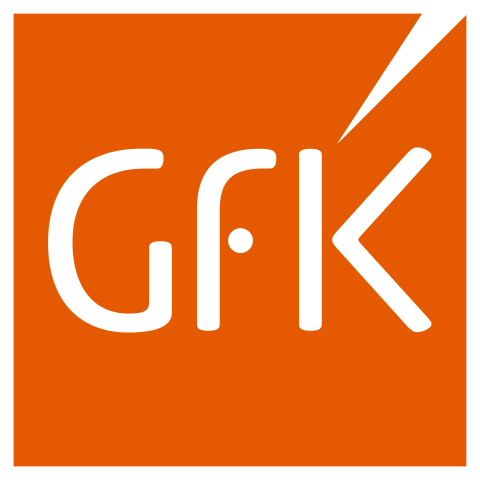Published on: March 17, 2023 | Last updated on: July 22, 2024 |
It’s strange to think, but psychology underpins everything we do as buyers and sellers.
Customer behaviour is an important part of marketing, given that trends change so quickly nowadays – especially on the digital shelf – and must be monitored closely for the best results.
Pricing and customer behaviour have a significant relationship in any business. By pricing your products in a certain way, you send messages to the wider market about your brand and who you want shopping at your store – be it a brick and mortar establishment or an ecommerce hub.
Luckily, pricing psychology is here to help you avoid some of the biggest pitfalls on your journey!
In this article, we explore the fundamentals of pricing psychology and show you how it can help grow your business.

In theory (and often in practice), price is the deciding factor when it comes to how we buy products and services.
For example, if you see one item priced at £10.00 then browse another similar product for £9.99, you’re going to be more drawn towards the latter – even if it is only cheaper by one pence!
The effect remains the same no matter where you shop, in-store or online. That’s pricing psychology 101 – tapping into customer habits and desires in a way that motivates them to buy.
This not only helps minimise checkout abandonment but also creates a strong connection between buyer and brand, helping to promote future consumer loyalty.
Think of pricing as a risk customers are willing to take on your products/services.
If all prices represent risk, then designing and displaying a strong retail pricing strategy will help show that yours is one worth taking.
That’s where psychological pricing comes into play.
A few examples of effective pricing psychology in action are:
Imagine you’re at the cinema and you see these popcorn options:
They come across as a little steep, and some visitors may decide to forgo popcorn altogether based on what’s available here.
Consider the following, though:
The Medium option acts as a decoy between Small and Large so that everyone feels they’re catered for in terms of popcorn, regardless of how close the price points are together.
The anchor effect is psychological pricing at its best. By placing more expensive products alongside other, cheaper options, you stand to make a sale because the buyer has a strong basis for comparison.
If you need cereal, for instance, having just standard options on display makes each box look pricey. But putting a few premium products either side of the standard boxes means they look more reasonable!
If you have a limited-time product to sell, such as concert tickets, it makes sense to capitalise on this fact and increase the price based on customer demand.
This can also work as part of a wider dynamic pricing strategy for your business.
Finished your free trial? Don’t want to miss out? Then you’re in luck – simply pay X amount to continue using our service.
If this sounds familiar to you, then you’re experiencing loss aversion. This psychological pricing strategy is designed to cultivate a sense of missing out among customers, and is especially effective within industries that generate a lot of hype, e.g. gaming, streaming, etc.
Perhaps the most generous psychological pricing strategy (and also one of the most widely used), rewards schemes are great for customer retention.
Thanking buyers for picking you over all the other brands available to them means they get to feel special and enjoy some great perks, all while continuing to shop with you at minimal expense to your business. Just make sure you don’t go overboard with your generosity!
You’ll need to think very carefully about how pricing psychology will look within your business.
Some strategies to consider include:
In business, the importance of monitoring your competitors cannot be overstated. See what the market is doing first of all before setting your base price. This way, you can be sure you’re starting on the right note and not alienating any shoppers.
Ever see that big strikethrough on an Amazon product and think you’re getting a great deal? Well, you certainly are, but it also means charm pricing has been implemented.
Listing a product at one rate before dropping it to another is a common tactic not just on the digital shelf but also TV shopping channels as well. Try doing some of this yourself if you want to entice more customers to your store, especially if you’ve got specific products that need selling.
More and more shoppers nowadays are paying attention to customer reviews. If your products/services have gotten five-star feedback, showcase it near the price! At least then customers will know they’re getting good quality for what they pay.
Which sounds better to you – £29 a month, or £300 yearly? Many people can’t afford truly large sums of money at any given moment, but they can afford to spread the cost if you offer a fragmented price service.
And if you’re good with figures, fragmented pricing may just make you more pro rata anyway!
If stock has been flying off your shelves, let people know about it. At the same time, if you offer things like plans, be sure to indicate the most popular option among your customers.
There’s nothing wrong with spotlighting your offering now and again, especially if it’s something that’s going to add unique value to your business at the same time.
If pricing is a sticking point for your business, we can help.
Our price tracker can be tailored to your organisation’s specific price monitoring needs, providing you with 24/7 coverage of your target market. The information it gives – which includes 45 fields’ worth of data – will empower you to make better decisions regarding your psychological pricing.
From market currency to vendor discounts, we offer round-the-clock pricing intel for when you need it most.
Think Magpie DBX sounds like a great tool? Get in touch and request a demo today!
And don’t forget to follow us on social media for more helpful marketing updates.
Want to learn more about how Magpie DBX can help your business? Get in touch with us and let us show you!



